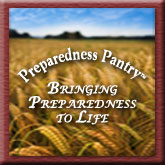
Seems like we've been doing this all year, waiting for the summer rains. Big fires to the east, west and north of us in the dry brush and forest lands. Well, look like it's our turn now. This is how it starts.
My sister and her husband, who live a little farther south and closer to the forest, are packing up their stuff. We've offered to come with our truck, but so far, no thanks.
I hear the helicopters and planes flying overhead. Usually the spotters are followed by the 'slurry bombers' which drop wet retardant to slow or stop the fire's path. Luckily the USFS air tanker base is near us -- just a few miles north of this fire, so we get a little more attention early in the process. It is dry enough that this type of fire can move miles each day, and it would not be helpful if the tanker base burns up. Even if it is enlightened self-interest, our residents are appreciative. 

In years past I've stood and watched grassland fires move at the speed of the wind, which can be a fire front moving at 10, 15 or 20 miles an hour. It is an awesome and terrifying thing. Our USFS teams are really good. The majority of the fires this year were contained before they hit 2,000 acres. I'm hoping we can be part of that story, not the others that are in the news. Please keep us all, especially those near the Wallow and Horseshoe 2 fires, in your prayers.
UPDATE: As of late evening 11 June, the human-caused grassland and forest fire was 1,400 acres and 48% contained. Containment is likely higher now, as the winds were fairly calm last night. I could see the red glow of the firelines in the mountains from 10 miles away. Local word is that at least 2 homes were lost, and uncertainty about whether all the grazers (cattle, horses and alpacas in the area) were saved.




No comments:
Post a Comment